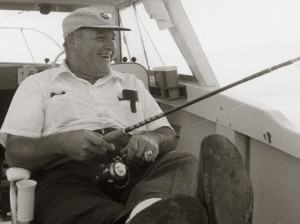Determined that the National Park Service reflect the growing national concern for minorities, Hartzog developed programs that gave the Service a different complexion. He named the first black park superintendent, the first career woman superintendent, the first American Indian superintendent, and the first black chief of a major U.S. police department. The promotion of women and minorities has steadily expanded over the years since.
Hartzog persuaded Congress to authorize a program for citizens to volunteer their time and talents to the needs of both park resources and park visitors. The Volunteers in Parks program (VIP) has flourished as budgetary shortfalls increasingly stressed permanent employees.
Beyond the parks themselves, Hartzog pursued outreach programs. Examples are the first environmental education curriculum in kindergarten through the twelfth grade. Complementing this initiative, he inaugurated study areas in a system of National Education and Development Landmarks, christened NEED. He also put into effect programs to make national parks relevant to an urban society, such as Summer in the Parks, Parks for all Seasons, and Living History. He obtained legislation creating the congressionally chartered National Park Foundation, which funded many worthy projects for which appropriations were unavailable.
Many other achievements and issues could be cited, but as a historian I want to give special emphasis to historic preservation. This is especially timely because in November 2006 Hartzog received the prestigious Crowninshield Award of the National Trust for Historic Preservation. The National Historic Preservation Act of 1966 broadened the concept of historic preservation from individual landmarks of significance to all survivors from the past that citizens thought worth saving as part of their local environment. Interstate highways and urban renewal had wiped out much of local value to citizens, not only individual structures, but entire districts and even treasured landscapes. The new act created a National Register of Historic Places, led to a network of State Historic Preservation Officers charged with nominating such local places to the Register, established a program of grants-in-aid to the states, and authorized an Advisory Council on Historic Preservation to advise the president and federal agency heads as well as enforce protective safeguards for registered properties.
The National Historic Preservation Act would not have passed, at least in 1966, but for George Hartzog. Many people worked hard on this initiative, but without Hartzog’s largely hidden political labors on Capitol Hill, with congressional staff as well as members, the law would not have been enacted. He not only brought his legendary political skills to bear, but ensured that the entire program would rest with the National Park Service. This I know because I witnessed it as participant.
The programs spawned by the National Historic Preservation Act have spread across the nation, onto the state and local levels and into the private sector. For people concerned with the quality of their local environment, the results of the act have proved one of the great success stories of the late twentieth century.
George Hartzog made great things happen. He benefited from a rare combination of circumstances that favored his vision. It fit neatly into President Lyndon Johnson’s “Great Society” and into Secretary of the Interior Stewart Udall’s robust environmentalism. The secretary, moreover, not only had selected George Hartzog for the directorship but gave him full rein and support in pursuing his vision. A Democratic Congress receptive to the “Great Society” proved receptive to the measures Hartzog promoted. And the Democratic Congress also discovered that voters concerned for their national parks and the environment in which they lived were ready for the laws he sought.
Well versed in the history of the National Park Service, I am familiar with the record of every director since the creation of the agency in 1916. Excepting the co-founders of the Service, Stephen Mather and Horace Albright, I have no hesitation in pronouncing George Hartzog the greatest director in the entire history of the Service.
History will benefit from his own view of his legacy as set down in this interview with Janet McDonnell.
Robert M. Utley*
*Before his retirement from federal service in 1980, Robert M. Utley served not only as chief historian of the National Park Service but as director of the Office of Archeology and Historic Preservation, assistant director of the Service for Park Historic Preservation, and deputy director of the Advisory Council on Historic Preservation. He is the author of sixteen books on the history of the American West.
 |
| George Hartzog enjoys a fishing expedition, after 1972. (National Park Service Historic Photograph Collection, Harpers Ferry Center.) |
***previous*** — ***next***

